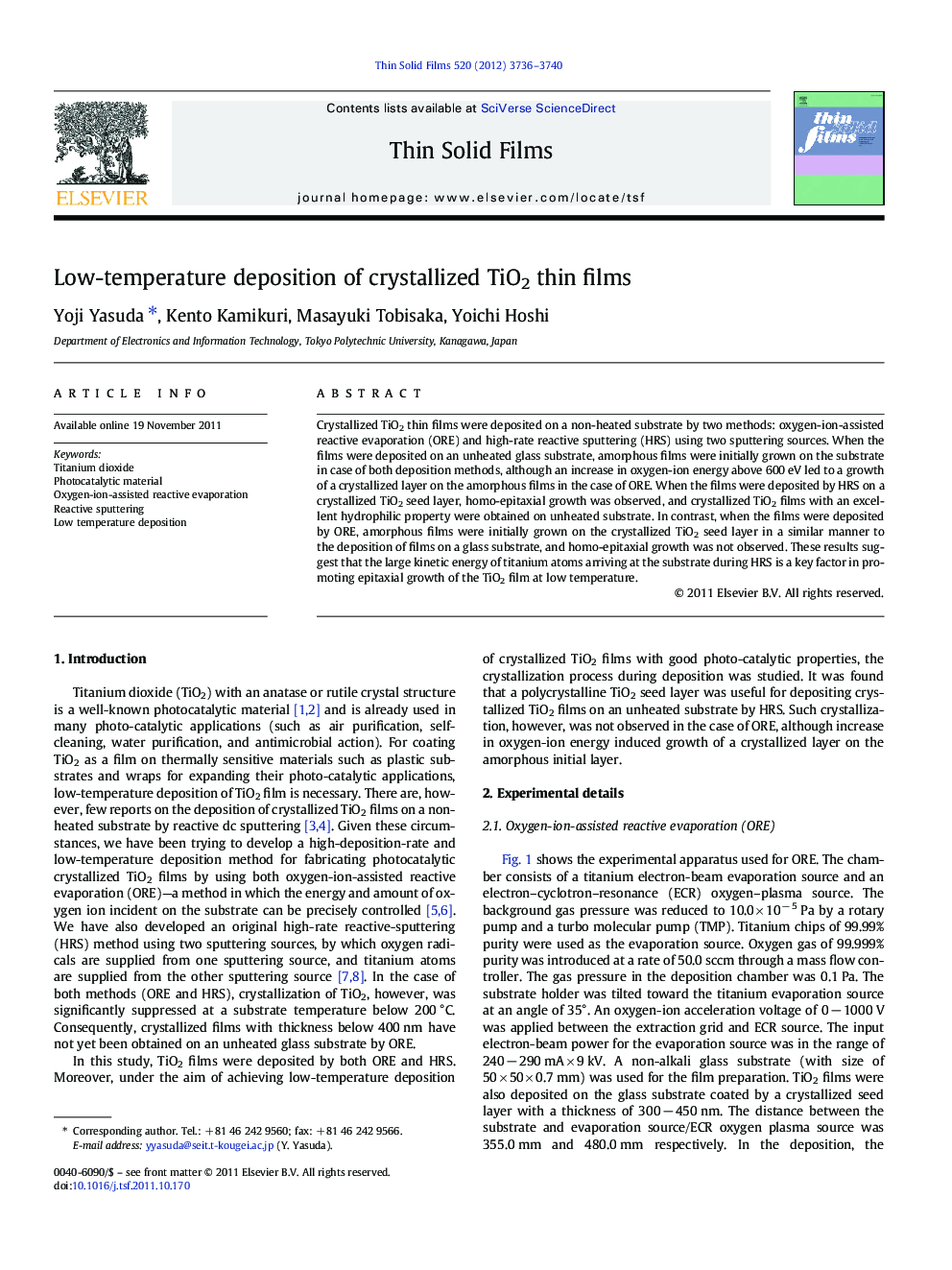| Article ID | Journal | Published Year | Pages | File Type |
|---|---|---|---|---|
| 1667618 | Thin Solid Films | 2012 | 5 Pages |
Crystallized TiO2 thin films were deposited on a non-heated substrate by two methods: oxygen-ion-assisted reactive evaporation (ORE) and high-rate reactive sputtering (HRS) using two sputtering sources. When the films were deposited on an unheated glass substrate, amorphous films were initially grown on the substrate in case of both deposition methods, although an increase in oxygen-ion energy above 600 eV led to a growth of a crystallized layer on the amorphous films in the case of ORE. When the films were deposited by HRS on a crystallized TiO2 seed layer, homo-epitaxial growth was observed, and crystallized TiO2 films with an excellent hydrophilic property were obtained on unheated substrate. In contrast, when the films were deposited by ORE, amorphous films were initially grown on the crystallized TiO2 seed layer in a similar manner to the deposition of films on a glass substrate, and homo-epitaxial growth was not observed. These results suggest that the large kinetic energy of titanium atoms arriving at the substrate during HRS is a key factor in promoting epitaxial growth of the TiO2 film at low temperature.
